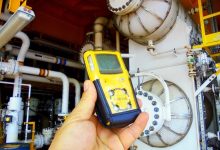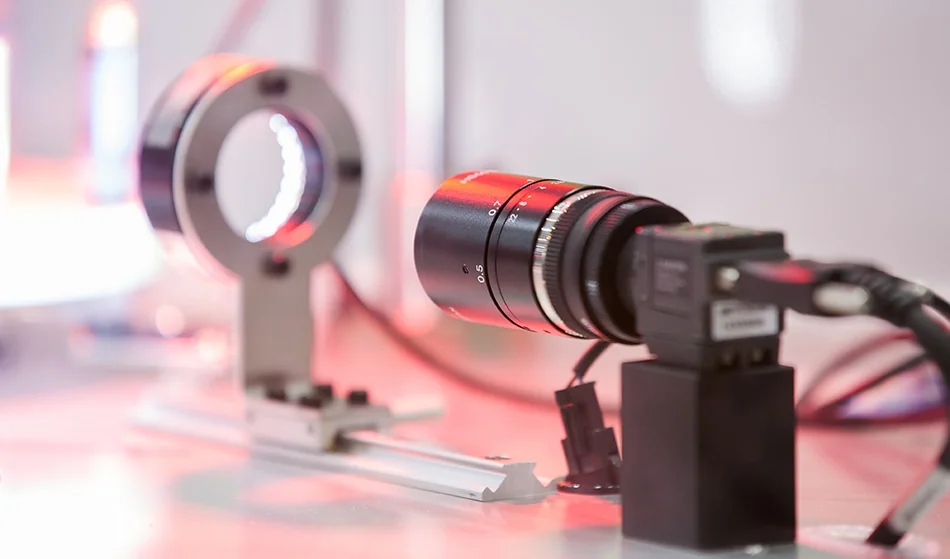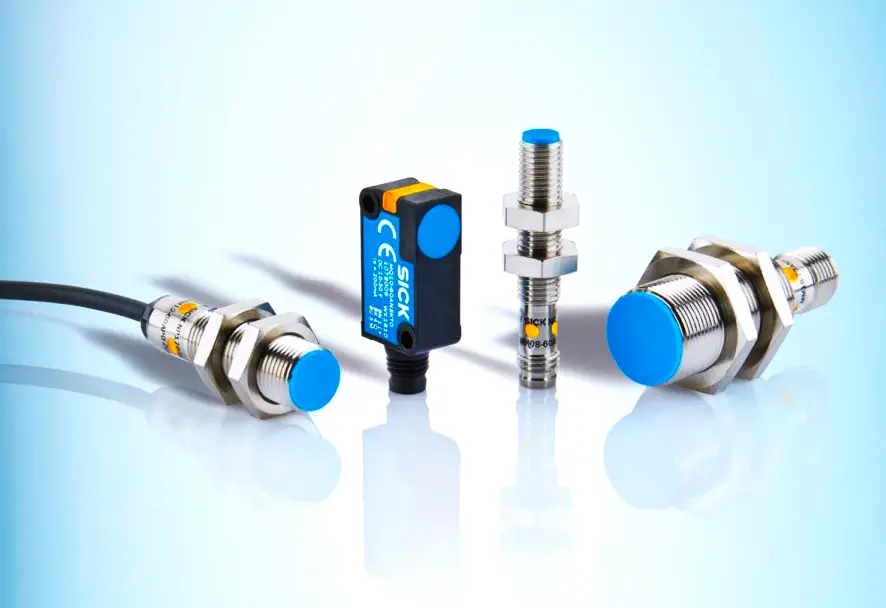Types of Biometric Sensors
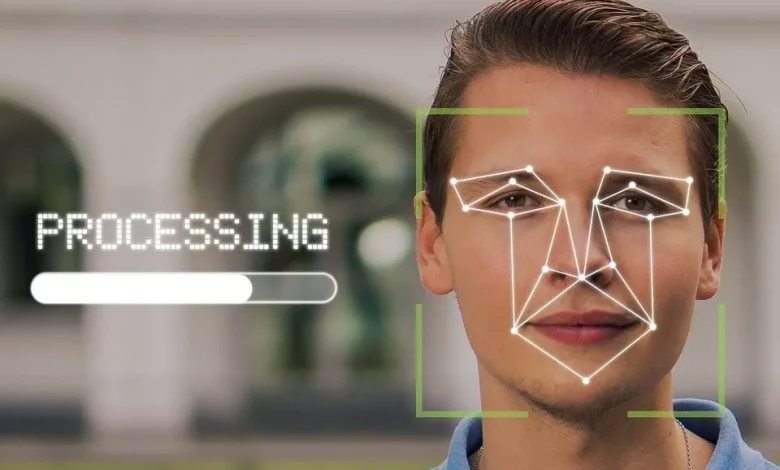
- Biometric Sensors:
Biometric sensors measure physiological parameters such as heart rate, blood pressure, and skin conductance. These sensors enable robots to assess human physiological responses, monitor user health and well-being, and personalize interactions based on individual characteristics. Biometric sensors are used in applications such as healthcare robotics, assistive technology, and human-robot interaction.
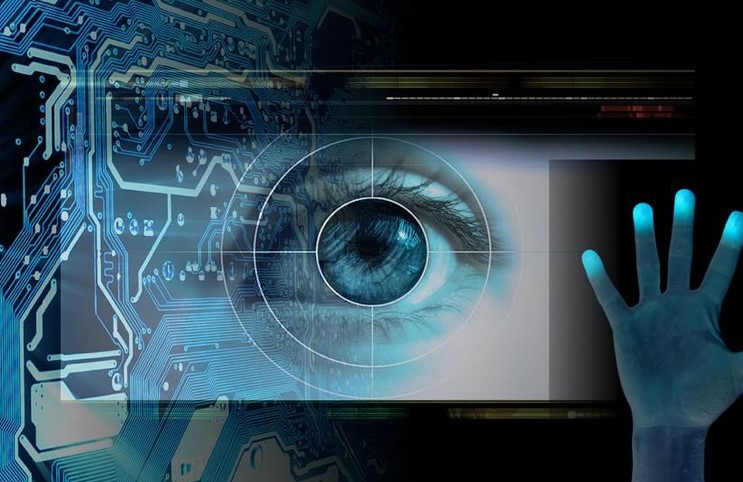
Biometric Sensors: Revolutionizing Robotics with Personalized Interaction and Authentication
In the ever-evolving landscape of robotics, where human-machine interaction and personalized experiences are increasingly important, biometric sensors stand out as transformative components. These sensors, capable of capturing and analyzing unique biological traits of individuals, enable robots to recognize, authenticate, and adapt to users in real-time. From facial recognition to fingerprint scanning, biometric sensors play a pivotal role in enhancing security, personalization, and user experience in robotics applications. Join us as we delve into the intricacies of biometric sensors, exploring their principles, functionalities, and transformative impact on robotics.
Principles of Biometric Sensors:
Biometric sensors operate based on the principle of capturing and analyzing unique biological characteristics or traits of individuals for identification, authentication, or physiological monitoring. These sensors leverage various biometric modalities, including:
- Facial Recognition:
Facial recognition sensors capture and analyze facial features, such as the arrangement of eyes, nose, and mouth, to identify individuals. These sensors use techniques such as 3D mapping, feature extraction, and pattern recognition algorithms to compare captured facial images with stored templates for authentication or identification purposes.
Facial Recognition: Transforming Robotics with Advanced Human Interaction
In the expansive realm of robotics, where seamless human-machine interaction is becoming increasingly important, facial recognition technology emerges as a revolutionary component. Leveraging sophisticated algorithms and biometric principles, facial recognition systems enable robots to identify, analyze, and respond to human faces with remarkable accuracy and efficiency. From personalized services to enhanced security, facial recognition plays a pivotal role in elevating the capabilities of robotic systems. Join us as we explore the intricacies of facial recognition technology, uncovering its principles, functionalities, and transformative impact on robotics.
Principles of Facial Recognition:
Facial recognition technology operates on the principle of capturing and analyzing unique facial features or patterns to identify individuals. These systems typically involve several key steps:
- Face Detection:
The process begins with face detection, where the system identifies and locates human faces within an image or video frame. Advanced algorithms analyze pixel intensities, shapes, and spatial relationships to detect facial regions accurately, even in varying lighting conditions or orientations.
- Feature Extraction:
Once faces are detected, the system extracts distinctive facial features or landmarks, such as the position of eyes, nose, mouth, and overall facial structure. These features are represented as numerical vectors or templates, encoding the unique characteristics of each face for comparison and matching.
- Pattern Matching:
The extracted facial features are then compared with stored templates or reference profiles in a database using pattern matching algorithms. By measuring the similarity or distance between feature vectors, the system identifies potential matches and assigns confidence scores to each candidate.
- Verification of Identification:
Based on the matching results and confidence scores, the system performs either verification or identification. In verification mode, the system verifies whether the captured face matches a specific individual’s identity. In identification mode, the system searches the entire database to find the best match for the captured face.
- Decision Making:
Finally, the system makes a decision based on the matching results, confidence thresholds, and predefined criteria. Depending on the application, the system may grant access, trigger specific actions, or provide feedback based on the recognized identity or detected facial attributes.

Functionalities of Facial Recognition in Robotics:
Facial recognition technology offers robots a multitude of functionalities that enhance human-robot interaction, security, and personalization:
- User Identification and Authentication:
Facial recognition enables robots to identify and authenticate users based on their unique facial features. By capturing and analyzing facial images in real-time, robots can grant access, personalize experiences, and tailor services to individual users securely and seamlessly.
- Access Control and Security:
Facial recognition systems support access control and security applications by preventing unauthorized access to restricted areas, devices, or data. By verifying individuals’ identities, robots can ensure that only authorized personnel are granted access, enhancing overall security and confidentiality.
- Emotion Recognition and Response:
Advanced facial recognition algorithms can analyze facial expressions and emotional cues to recognize users’ emotions. By detecting emotions such as happiness, sadness, or anger, robots can adjust their interactions, provide empathetic responses, or offer appropriate support to enhance user experience and engagement.
- Personalized Services and Recommendations:
Facial recognition enables robots to personalize services, recommendations, and content based on users’ preferences and profiles. By identifying users’ identities or demographic attributes, robots can tailor interactions, offer relevant information, and anticipate users’ needs more effectively.
- Surveillance and Monitoring:
Facial recognition systems support surveillance and monitoring applications by tracking and analyzing individuals’ movements and activities. By recognizing faces in crowds or public spaces, robots can assist in law enforcement, public safety, and crowd management efforts, enhancing situational awareness and response capabilities.
Advancements and Future Directions:
Recent advancements in facial recognition technology have focused on improving accuracy, robustness, and privacy through deep learning, neural networks, and multimodal fusion techniques. Emerging trends include the development of 3D facial recognition, facial expression analysis, and anti-spoofing measures to enhance system performance and security.
As robotics technology continues to evolve, the integration of advanced facial recognition capabilities will play a crucial role in enabling more intuitive, adaptive, and personalized human-robot interactions. From smart homes and service robots to security systems and healthcare applications, facial recognition technology offers a versatile and powerful solution for enhancing the capabilities and usability of robotic systems. By leveraging the unique capabilities of facial recognition, robots can establish trust, foster engagement, and adapt to the diverse needs and preferences of users, paving the way for a future of intelligent, empathetic robotics.
- Fingerprint Scanning:
Fingerprint sensors capture the unique patterns of ridges and valleys on an individual’s fingertips to verify their identity. These sensors use optical, capacitive, or ultrasonic technologies to acquire high-resolution fingerprint images and match them against stored templates in a database for authentication or access control.

Fingerprint Sensors: Enhancing Robotic Security and Interaction
In the realm of robotics, where security, personalization, and seamless interaction with humans are paramount, fingerprint sensors emerge as essential components, offering unparalleled capabilities for identification, authentication, and access control. Leveraging biometric principles and advanced technology, fingerprint sensors enable robots to recognize individuals based on unique fingerprint patterns, providing robust security and personalized experiences. Join us as we delve into the intricacies of fingerprint sensors, exploring their principles, functionalities, and transformative impact on robotics.
Principles of Fingerprint Sensors:
Fingerprint sensors operate based on the principle of capturing and analyzing the unique patterns of ridges and valleys on an individual’s fingertips for identification or authentication. These sensors typically involve several key steps:
- Image Acquisition:
The process begins with image acquisition, where the sensor captures high-resolution images of a user’s fingerprints using optical, capacitive, or ultrasonic technology. Optical sensors use light to capture fingerprint images, while capacitive sensors detect changes in electrical capacitance caused by the ridges and valleys of the fingerprint.
- Feature Extraction:
Once fingerprints are captured, the sensor extracts distinctive features or minutiae points from the fingerprint images. Minutiae points include ridge endings, bifurcations, and ridge dots, which are unique to each individual and form the basis for fingerprint matching and comparison.
- Template Creation:
The extracted features are then encoded into a mathematical template or fingerprint profile, which represents the unique characteristics of the fingerprint. The template is stored securely in a database or on the device for subsequent comparison and matching during authentication or identification processes.
- Pattern Matching:
When a user presents their fingerprint for authentication, the sensor compares the captured fingerprint image with the stored templates using pattern matching algorithms. By measuring the similarity or distance between the features of the captured fingerprint and the stored templates, the sensor determines whether a match is found.
- Decision Making:
Based on the matching results and predefined criteria, the sensor makes a decision to either grant access, deny access, or prompt for further verification. The decision is typically based on confidence scores, threshold values, and security policies defined by the system administrator or user.
Functionalities of Fingerprint Sensors in Robotics:
Fingerprint sensors provide robots with critical functionalities that enhance security, personalization, and user experience:
- User Identification and Authentication:
Fingerprint sensors enable robots to identify and authenticate users based on their unique fingerprint patterns. By comparing captured fingerprints with stored templates, robots can verify users’ identities securely and grant access to authorized individuals.
- Access Control and Security:
Fingerprint sensors support access control and security applications in robotics by preventing unauthorized access to sensitive information, devices, or areas. By requiring fingerprint authentication, robots can ensure that only authorized personnel are granted access, enhancing overall security and confidentiality.
- Personalized Interaction:
Fingerprint sensors facilitate personalized interaction between robots and users by recognizing individual identities and preferences. By associating fingerprint profiles with user-specific settings or preferences, robots can tailor interactions, services, and recommendations to meet the unique needs of each user.
- Transaction Authentication:
In robotic applications involving financial transactions or sensitive operations, fingerprint sensors can be used to authenticate users’ identities before proceeding with the transaction. By requiring fingerprint verification, robots can ensure the integrity and security of transactions, protecting against unauthorized access or fraudulent activities.
- User Profiles and Preferences:
Fingerprint sensors enable robots to maintain user profiles and preferences, storing information such as contact details, preferences, and custom settings associated with each user’s fingerprint. By recognizing users’ fingerprints, robots can retrieve and apply personalized settings, configurations, or preferences automatically, enhancing user experience and satisfaction.
Advancements and Future Directions:
Recent advancements in fingerprint sensor technology have focused on improving accuracy, speed, and reliability through miniaturization, enhanced algorithms, and sensor integration. Emerging trends include the development of 3D fingerprint imaging, spoof detection, and liveness detection techniques to enhance system security and robustness.
As robotics technology continues to advance, the integration of advanced fingerprint sensors will play a crucial role in enabling more secure, personalized, and user-friendly robotic systems. From security robots and access control systems to consumer robots and smart devices, fingerprint sensors offer a versatile and reliable solution for enhancing human-robot interaction and security. By leveraging the unique capabilities of fingerprint sensors, robots can establish trust, provide personalized experiences, and adapt to the diverse needs and preferences of users, paving the way for a future of intelligent, secure, and user-centric robotics.
- Iris Recognition:
Iris recognition sensors capture and analyze the unique patterns of the iris, the colored portion of the eye, to authenticate individuals. These sensors use near-infrared illumination and imaging techniques to acquire iris images and extract distinctive features for comparison with stored templates for biometric authentication.

Iris Recognition: Pioneering Secure and Precise Human Identification in Robotics
In the realm of robotics, where security, accuracy, and seamless interaction with humans are paramount, iris recognition technology stands out as a pioneering component. By leveraging the unique patterns of the iris, iris recognition systems enable robots to identify and authenticate individuals with unparalleled precision and reliability. From access control to personalized services, iris recognition plays a transformative role in enhancing the capabilities of robotic systems. Let’s delve into the intricacies of iris recognition, exploring its principles, functionalities, and profound impact on robotics.
Principles of Iris Recognition:
Iris recognition technology operates on the principle of capturing and analyzing the unique patterns of the iris, the colored portion of the eye surrounding the pupil. These patterns are highly distinctive and remain stable over time, making iris recognition one of the most accurate biometric authentication methods available. The process typically involves several key steps:
- Image Acquisition:
The iris recognition process begins with capturing high-resolution images of the iris using specialized cameras or sensors. Near-infrared illumination is often used to enhance contrast and visibility, allowing for precise imaging of the iris even in varying lighting conditions.
- Iris Segmentation:
Once iris images are captured, the iris region is segmented or extracted from the overall eye image. This process involves isolating the iris area while removing any occlusions or reflections caused by eyelids or eyelashes.
- Feature Extraction:
The segmented iris image is then analyzed to extract distinctive features, such as the arrangement of crypts, furrows, and radial patterns. These features are encoded into a mathematical template or iris code, which represents the unique characteristics of the iris for comparison and matching.
- Template Matching:
During authentication or identification, the captured iris image is compared with stored iris templates in a database using pattern matching algorithms. The system calculates the similarity or dissimilarity between the captured iris and the stored templates, assigning confidence scores to potential matches.
- Decision Making:
Based on the matching results and predefined thresholds, the system makes a decision to either grant access, deny access, or prompt for further verification. The decision is typically based on the level of similarity between the captured iris and the stored templates, with higher similarity scores indicating a stronger match.
Functionalities of Iris Recognition in Robotics:
Iris recognition technology offers robots a multitude of functionalities that enhance security, access control, and personalized interaction:
- User Identification and Authentication:
Iris recognition enables robots to identify and authenticate users based on their unique iris patterns. By capturing and analyzing iris images, robots can verify users’ identities with exceptional accuracy and reliability, granting access only to authorized individuals.
- Access Control and Security:
Iris recognition systems support access control and security applications in robotics by preventing unauthorized access to sensitive information, devices, or areas. By requiring iris authentication, robots can ensure that only authorized personnel are granted access, enhancing overall security and confidentiality.
- High-Security Environments:
In high-security environments such as government facilities, research laboratories, or financial institutions, iris recognition provides an additional layer of security beyond traditional authentication methods. By leveraging the unique characteristics of the iris, robots can enforce strict access control measures and prevent unauthorized entry effectively.
- Personalized Services:
Iris recognition facilitates personalized interaction between robots and users by recognizing individual identities and preferences. By associating iris patterns with user-specific settings or profiles, robots can tailor interactions, services, and recommendations to meet the unique needs of each user, enhancing overall user experience and satisfaction.
- Transaction Authentication:
In robotic applications involving financial transactions or sensitive operations, iris recognition can be used to authenticate users’ identities before proceeding with the transaction. By requiring iris verification, robots can ensure the integrity and security of transactions, protecting against unauthorized access or fraudulent activities.
Advancements and Future Directions:
Recent advancements in iris recognition technology have focused on improving speed, accuracy, and usability through advanced algorithms and sensor technology. Emerging trends include the development of mobile iris recognition systems, iris-on-the-move solutions, and multi-modal biometric fusion techniques to enhance system performance and versatility.
As robotics technology continues to advance, the integration of advanced iris recognition capabilities will play a crucial role in enabling more secure, efficient, and user-friendly robotic systems. From security robots and access control systems to consumer robots and smart devices, iris recognition offers a versatile and reliable solution for enhancing human-robot interaction and security. By leveraging the unique capabilities of iris recognition, robots can establish trust, provide personalized experiences, and adapt to the diverse needs and preferences of users, paving the way for a future of intelligent, secure, and user-centric robotics.
- Voice Recognition:
Voice recognition sensors capture and analyze the unique characteristics of an individual’s voice, including pitch, tone, and speech patterns, for identification or authentication purposes. These sensors use signal processing algorithms to analyze voice samples and match them against stored voiceprints in a database for user verification.
- Biometric Wearables:
Biometric wearables, such as smartwatches and fitness trackers, incorporate sensors to monitor physiological parameters, such as heart rate, blood pressure, and body temperature, for health monitoring and activity tracking. These sensors use optical, electrochemical, or impedance-based technologies to measure biometric signals and provide real-time feedback to users.
Functionalities of Biometric Sensors in Robotics:
Biometric sensors provide robots with critical functionalities that enhance their interaction with users and adaptability to individual preferences:
- User Identification and Authentication:
Biometric sensors enable robots to identify and authenticate users based on their unique biological traits, such as facial features, fingerprints, or iris patterns. By capturing and comparing biometric data in real-time, sensors allow robots to grant access, personalize experiences, and tailor services to individual users securely.
- Secure Access Control:
Biometric sensors support secure access control in robotics applications by preventing unauthorized access to sensitive information, devices, or facilities. By requiring biometric authentication, robots can ensure that only authorized users are granted access to restricted areas, confidential data, or high-security environments, enhancing overall system security and integrity.
- Personalized Interaction:
Biometric sensors facilitate personalized interaction between robots and users by recognizing individual identities and adapting responses or behaviors accordingly. By incorporating user-specific preferences, profiles, or settings, robots can customize interactions, recommendations, and services to meet the unique needs and preferences of each user, enhancing overall user satisfaction and engagement.
- Health Monitoring and Wellness:
Biometric wearables integrated into robotics platforms enable continuous monitoring of users’ health and wellness parameters, such as heart rate, sleep patterns, and activity levels. By capturing biometric data in real-time, sensors can provide insights into users’ health status, detect abnormalities or trends, and encourage healthy behaviors or interventions, promoting overall well-being and lifestyle management.
- Emotion Recognition:
Advanced biometric sensors capable of analyzing facial expressions, vocal cues, or physiological responses enable robots to recognize and respond to users’ emotional states. By detecting emotions such as happiness, sadness, or stress, sensors can adjust interactions, provide emotional support, or offer appropriate interventions to enhance user experience and satisfaction.
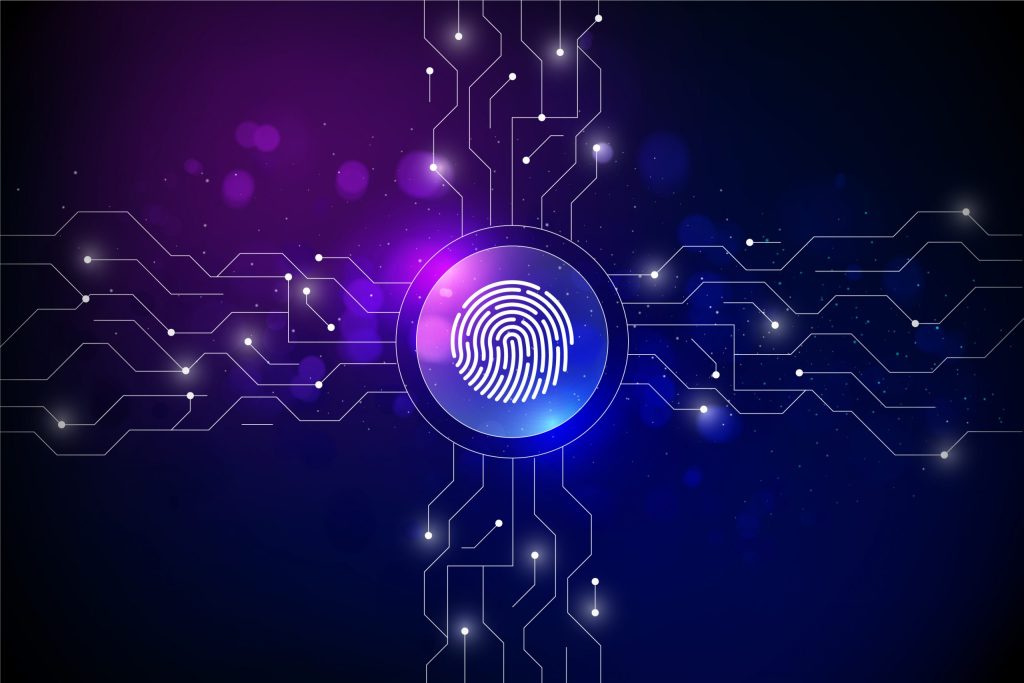
Advancements and Future Directions:
Recent advancements in biometric sensor technology have focused on improving accuracy, reliability, and usability through miniaturization, integration, and enhanced algorithms. Emerging trends include the development of multimodal biometric systems, combining multiple biometric modalities for improved recognition performance and robustness. Additionally, the integration of biometric sensors with artificial intelligence (AI) algorithms and edge computing platforms enables real-time processing, analysis, and decision-making in robotics applications.
As robotics technology continues to advance and evolve, the integration of advanced biometric sensors will play a crucial role in enhancing human-robot interaction, personalization, and user experience. From security and access control to healthcare and personalized services, biometric sensors offer a versatile and reliable solution for enabling seamless integration of robots into various domains of human life. By leveraging the unique capabilities of biometric sensors, robots can establish trust, foster engagement, and adapt to the diverse needs and preferences of users, paving the way for a future of intelligent, empathetic robotics.

